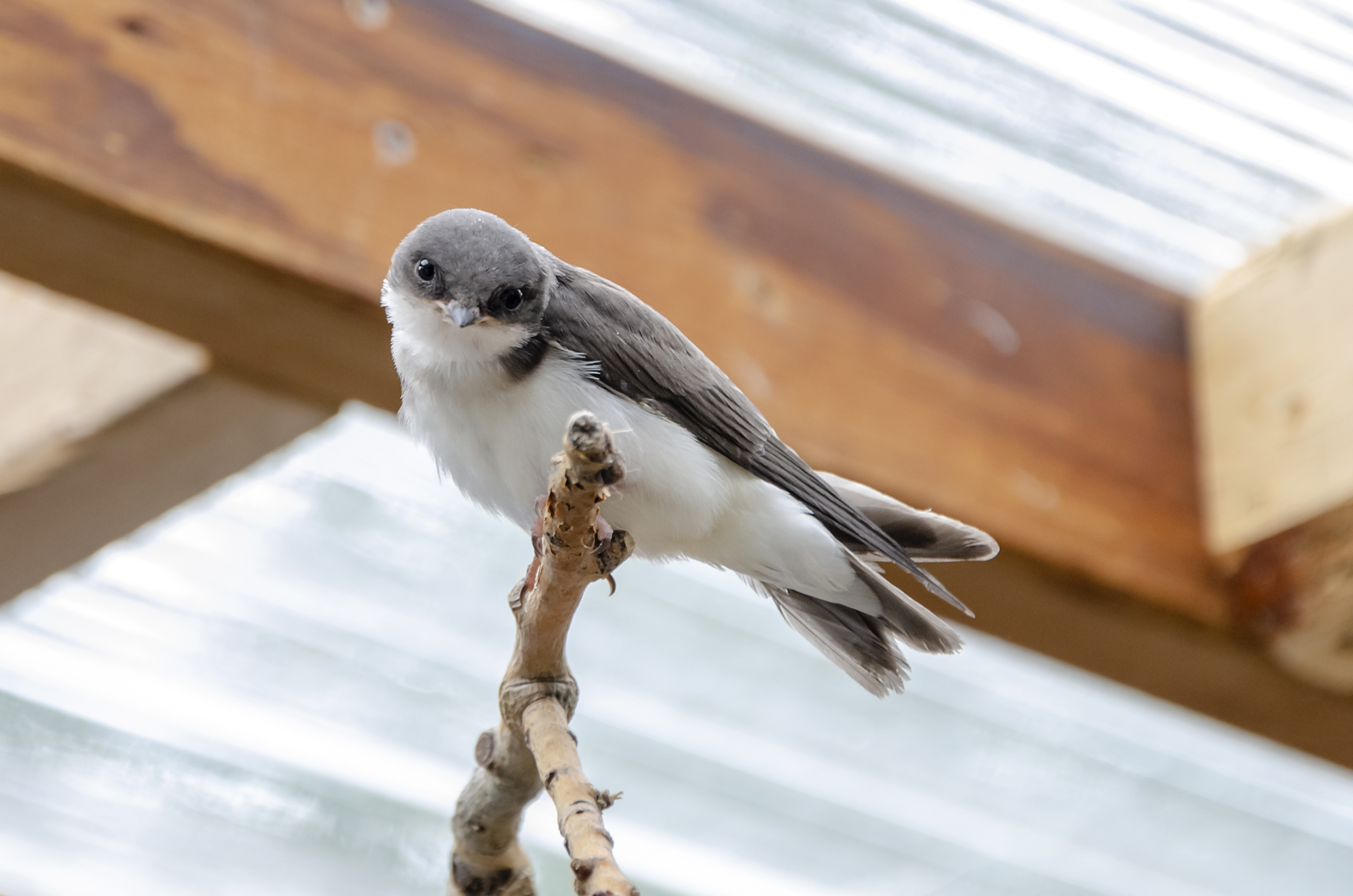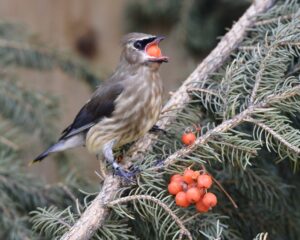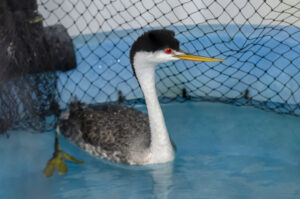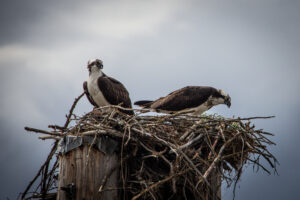by Marissa Hansen
Alberta is home to a diverse array of wildlife. Among the many avian residents of this province, swallows stand out as fascinating and important species. These various bird species inhabit different environments across the province and have unique nesting habits. With factors such as climate change and habitat loss, many swallow species have seen a decline in population. It is important to understand swallows and their differences when creating conservation strategies.
Swallow Species of Alberta:
Tree Swallow
Tachycineta bicolor
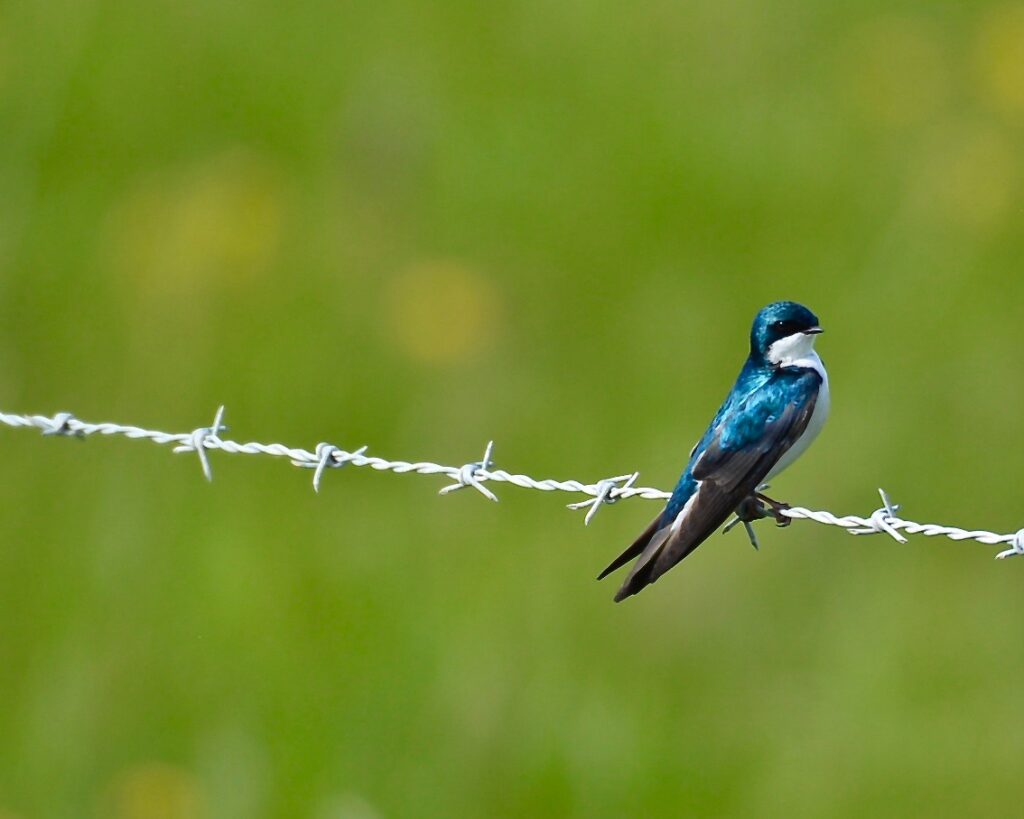
Violet-Green Sparrow
Tachycineta thalassina
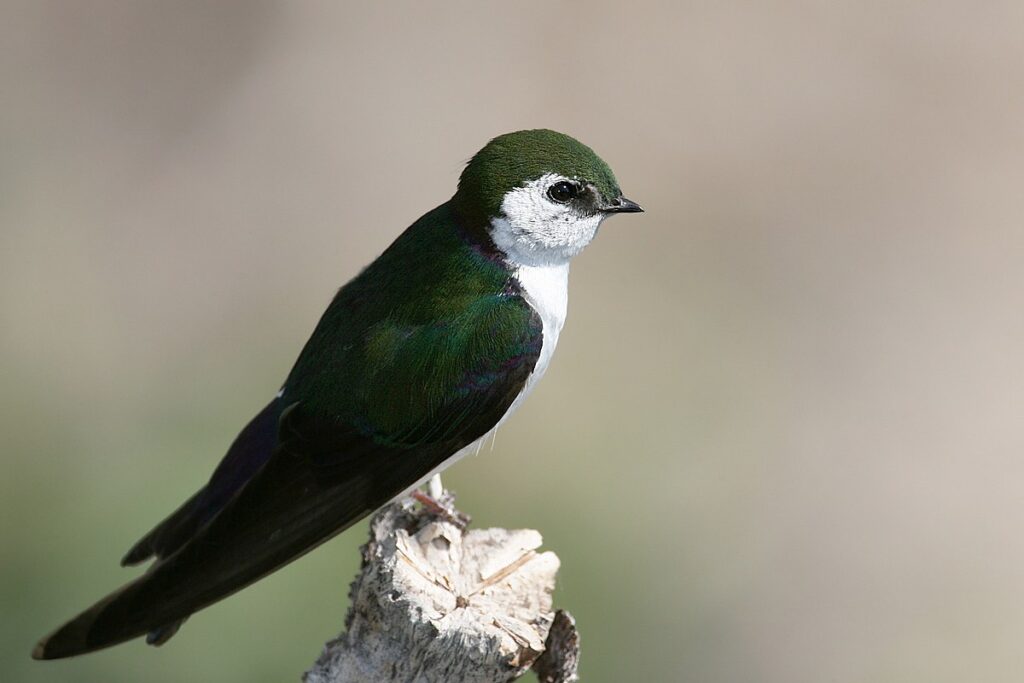
Barn Swallow
Hirundo rustica
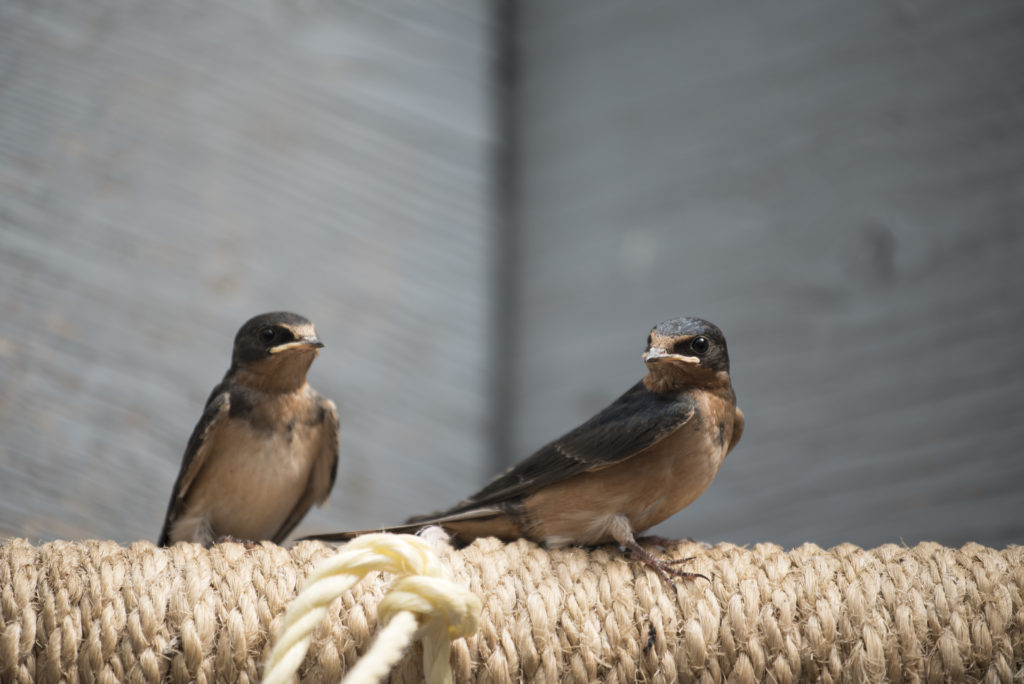
Cliff Swallow
Petrochelidon pyrrhonota
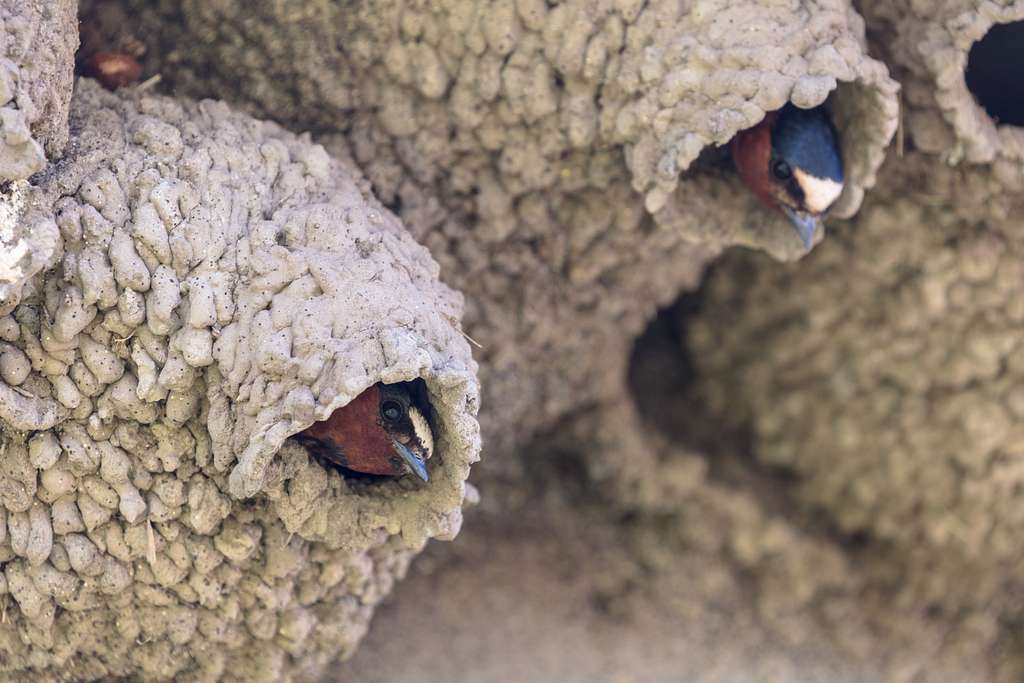
Northern Rough-winged Swallow
Stelgidopteryx serripennis
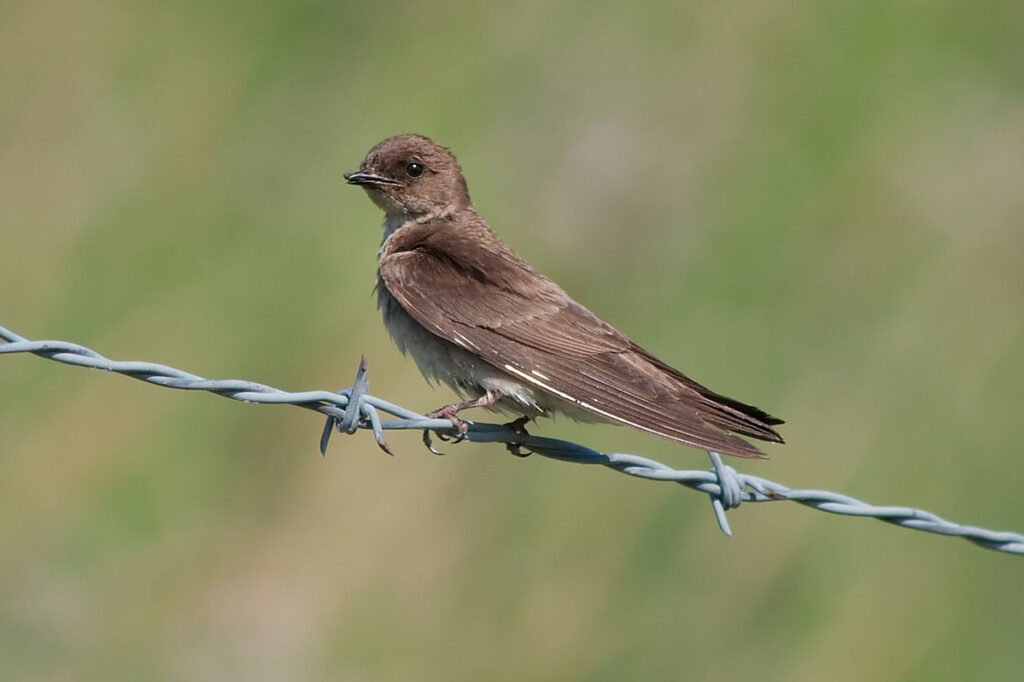
Bank Swallow
Riparia riparia
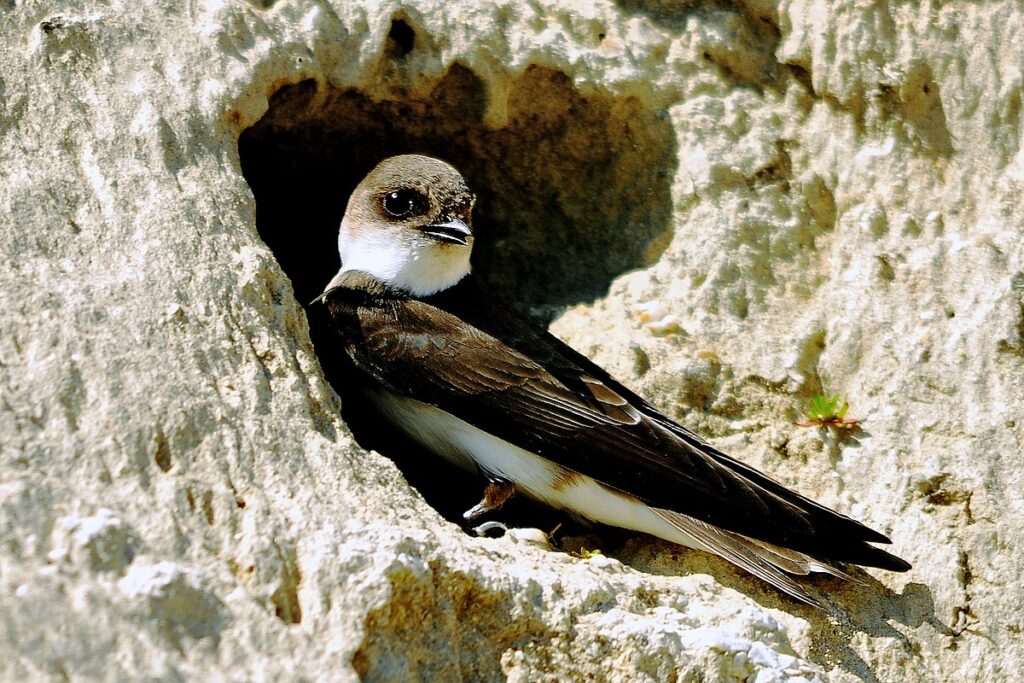
Conservation Challenges
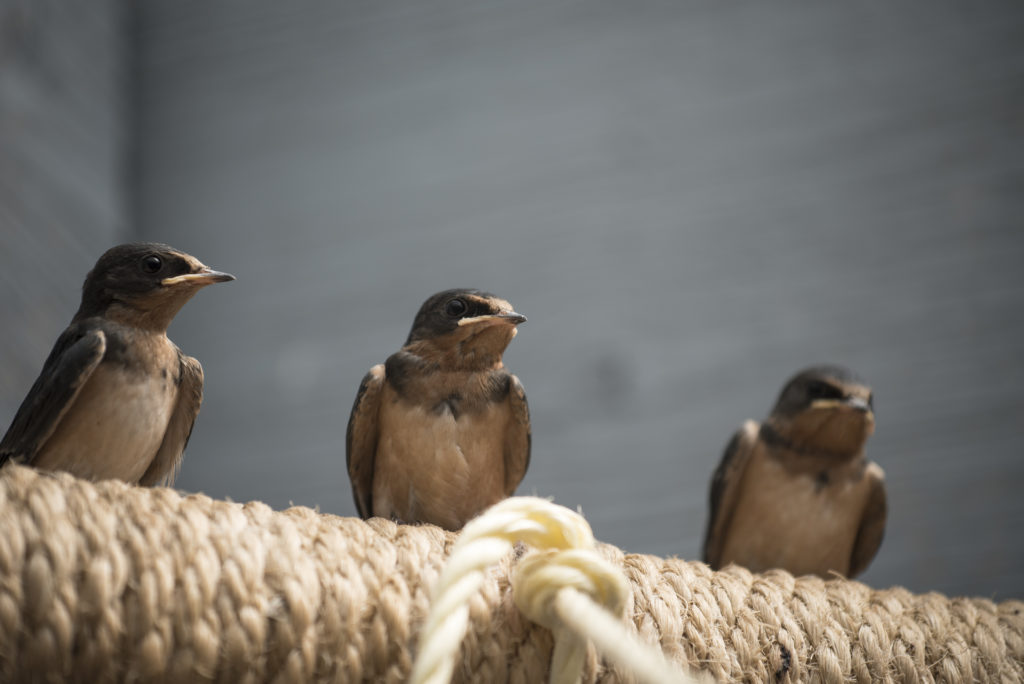
While swallows in Alberta are not currently classified as endangered, they do face several threats that could impact their populations.
Habitat loss is a significant concern when it comes to the well-being of swallow populations in Alberta.8 The expansion of human development and the intensification of agriculture have profound consequences for these birds. This development heavily includes agricultural expansion. Alberta’s fertile land has made it a hotspot for agricultural activities.9 The cultivation of crops and the raising of livestock require large areas of land, which can encroach upon natural habitats. This expansion results in several problems including loss of foraging grounds, disruptions during nesting and habitat fragmentation.9
Pesticides play a crucial role in modern agriculture, helping to protect crops from pests and increase yields. However, the widespread use of these chemicals has raised significant concerns about their impact on the environment, including their effects on the insect populations that swallows rely on as their primary food source.9 In Alberta and beyond, the use of pesticides can have detrimental consequences for swallow populations and the ecosystems they inhabit.
Pesticides are designed to be toxic to a wide range of insects, including those that swallows feed on. The application of insecticides, herbicides, and other agricultural chemicals can lead to direct harm to insect populations. Pesticides can significantly reduce the number of insects in agricultural areas.9 This reduction affects the availability of flying insects that swallows hunt while in flight, ultimately making it harder for these birds to find enough food.9 Swallows often have specific preferences for certain insect species. Pesticides may disproportionately affect these preferred prey species, further reducing the quality of the available food supply. Pesticides can also accumulate in the bodies of insects, making them increasingly toxic to the birds that consume them.9 This can lead to direct harm to swallow populations and affect their reproductive success.
Conservation Initiatives
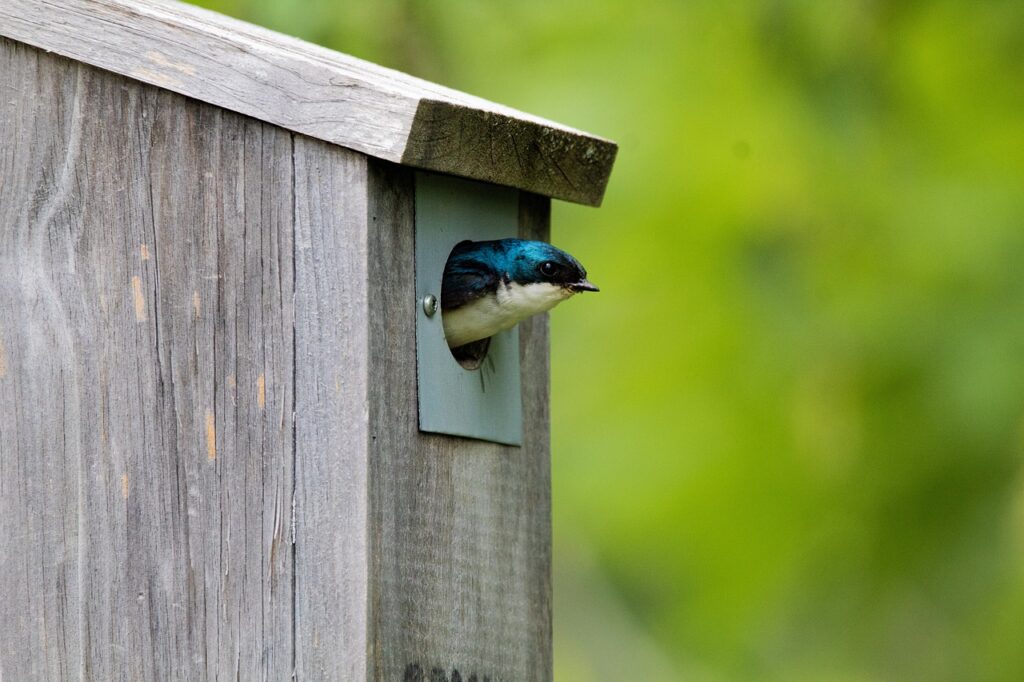
To address the population decline faced by swallows in Alberta, several conservation initiatives are in place:
Habitat Restoration: Conservationists work to restore and protect key swallow habitats, including wetlands, cliffs, and mud banks. Efforts may include re-vegetation, wetland preservation, and the creation of protected nesting areas.
Nest Box Programs: Providing artificial nesting sites, such as nest boxes, can help compensate for the loss of natural nesting locations and give swallows secure places to breed.
Sustainable Agriculture: Encouraging sustainable agricultural practices, such as reduced pesticide use and the preservation of natural vegetation alongside fields, can help maintain healthy insect populations and swallow foraging grounds.
Public Awareness: Educating the public about the importance of swallows and the consequences of habitat loss is vital for garnering support for conservation efforts and encouraging responsible land use practices.
The swallows of Alberta encompass a diverse array of species, each uniquely adapted to different environments and nesting habits. Although they are not currently in danger of extinction, swallows face challenges due to habitat loss, climate change, and other environmental factors. Conservation efforts are crucial to ensure the continued well-being of these remarkable birds and their vital role in Alberta’s ecosystems. By preserving their habitats and promoting public awareness, we can help secure the future of these incredible avian residents of Alberta.
Bibliography
- Jacklin, Meghan. “Tree Swallow.” Edmonton & Area Land Trust, April 27, 2023. https://www.ealt.ca/species-spotlight-list/tree-swallow.
- “Tree Swallow Overview, All about Birds, Cornell Lab of Ornithology.” Overview, All About Birds, Cornell Lab of Ornithology. Accessed October 26, 2023. https://www.allaboutbirds.org/guide/Tree_Swallow/overview#.
- Parks Canada Agency, Government of Canada. “Barn Swallows.” Banff National Park, November 19, 2022. https://parks.canada.ca/pn-np/ab/banff/nature/conservation/Especes-species/rustique-barn.
- “Barn Swallow.” Hinterland Who’s Who – Barn Swallow. Accessed October 27, 2023. https://www.hww.ca/en/wildlife/birds/barn-swallow.html.
- “Cliff Swallow.” Audubon, September 8, 2023. https://www.audubon.org/field-guide/bird/cliff-swallow.
- De Jong, Michael J. “Northern Rough-Winged Swallow (Stelgidopteryx Serripennis), Version 1.0.” Birds of the World, March 4, 2020. https://birdsoftheworld.org/bow/species/nrwswa/cur/introduction.
- “Northern Rough-Winged Swallow (Stelgidopteryx Serripennis).” Canada.ca. Accessed October 26, 2023. https://wildlife-species.canada.ca/bird-status/oiseau-bird-eng.aspx?sY=2014&sL=e&sM=p1&sB=NRWS.
- Amanda Simard. “Baird’s Sparrow.” Nature Canada, August 3, 2022. https://naturecanada.ca/discover-nature/endangered-species/bairds-sparrow/#:~:text=A%20lot%20of%20habitat%20is,parasitism%20and%20invasive%20exotic%20plants.
- Hinterland who’s who – pesticides and wild birds. Accessed October 26
- “Bank Swallow (Riparia Riparia): In Sandpits and Quarries.” Government of Canada, May 17, 2021. https://www.canada.ca/en/
environment-climate-change/ services/species-risk-public- registry/related-information/ bank-swallow-sandpits- quarries.html. - “Bank Swallow.” Audubon, January 14, 2024. https://www.audubon.org/field-
guide/bird/bank-swallow. - “Violet-Green Swallow Overview, All about Birds, Cornell Lab of Ornithology.” Overview, All About Birds, Cornell Lab of Ornithology. Accessed February 5, 2024. https://www.allaboutbirds.org/
guide/Violet-green_Swallow/ overview. - “Violet-Green Swallow (Tachycineta Thalassina).” Canada.ca. Accessed February 5, 2024. https://wildlife-species.
canada.ca/bird-status/oiseau- bird-eng.aspx?sY=2014&sL=e&sB= VGSW&sM=p1.

